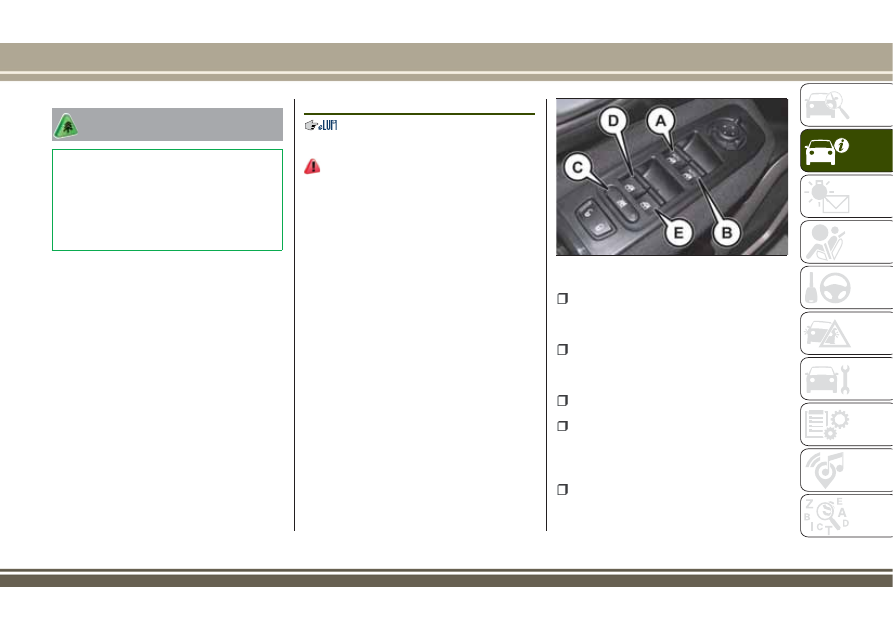Jeep Renegade (2018 year). Instruction - part 3

IMPORTANT
2) The system uses R134a coolant, which
does not pollute the environment in the
event of accidental leakage. Under no
circumstances use R1234yf and
R12 fluids, which are incompatible with
the components of the system.
ELECTRIC WINDOWS
ELECTRIC WINDOWS
22)
They operate with the ignition device at
MAR and for nearly 3 minutes after the
ignition device switches to STOP (or also
after the mechanical key has been
extracted, for vehicles equipped with
mechanical key with remote control).
When one of the front doors is opened
this operation is disabled.
Driver side front door controls
The buttons are located on the trims of
the left side door panels (left hand drive
versions) or of the right side door panels
(right hand drive versions). All windows
can be controlled from the driver side
door panel fig. 39.
A: front left window opening/closing.
"Continuous automatic" operation during
window opening/closing stage and
anti-pinch system activated.
B: right front window opening/closing.
"Continuous automatic" operation during
window opening/closing stage and
anti-pinch system activated.
C: enabling/disabling of rear door
electric window controls;
D: left rear window opening/closing (if
present). "Automatic continuous"
operation during window opening/closing,
manual electric operation during window
closing;
E: right rear window opening/closing
(if present). "Automatic continuous"
operation during window opening/closing,
39
J0A0078C
45